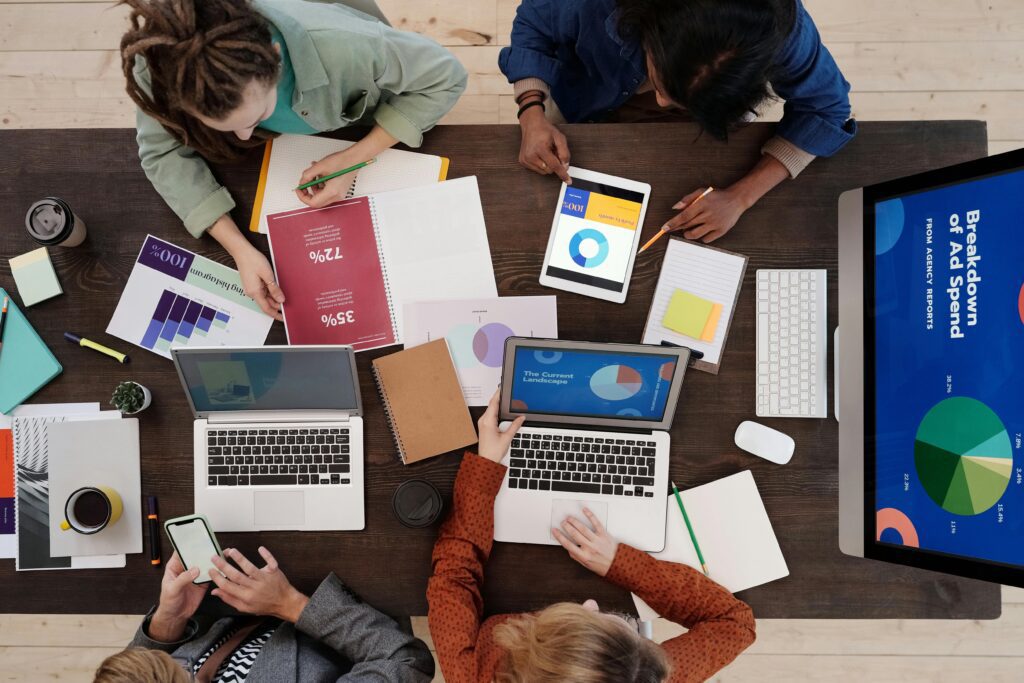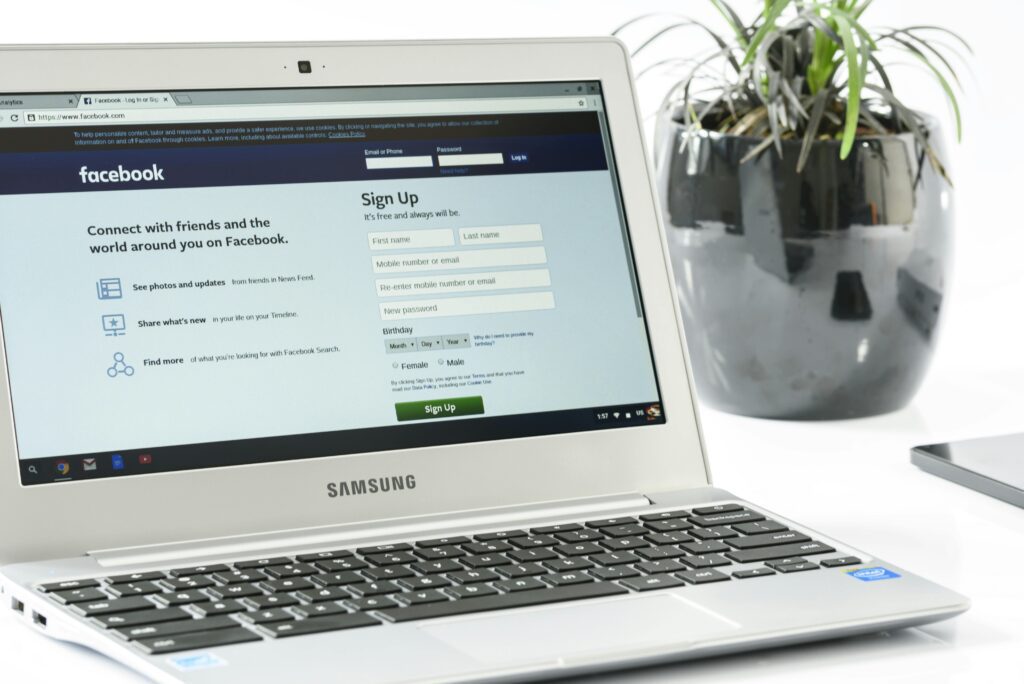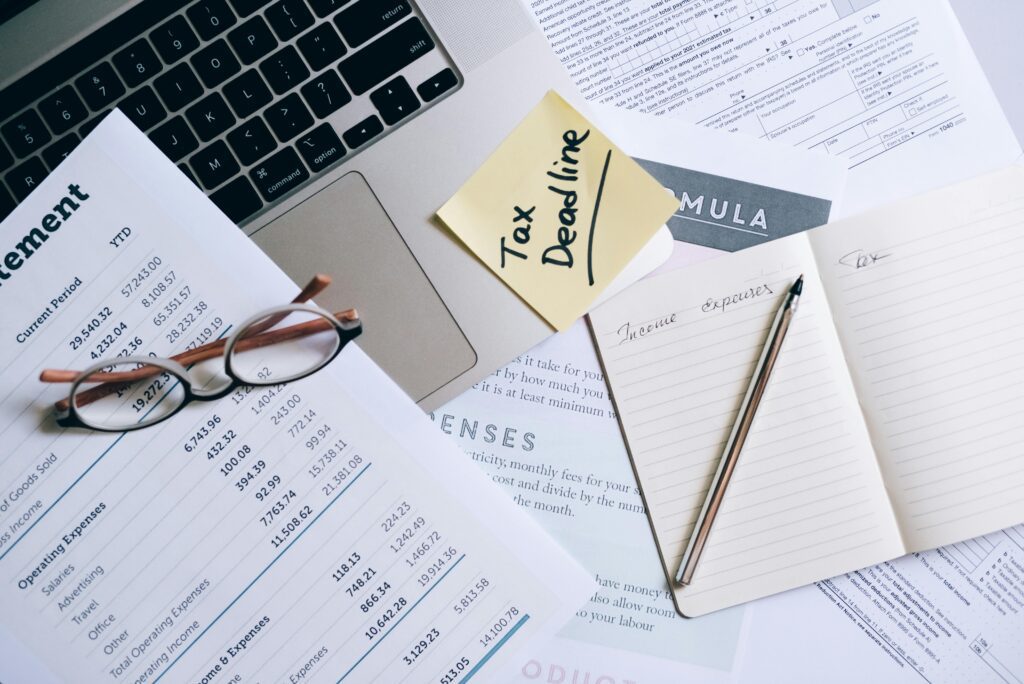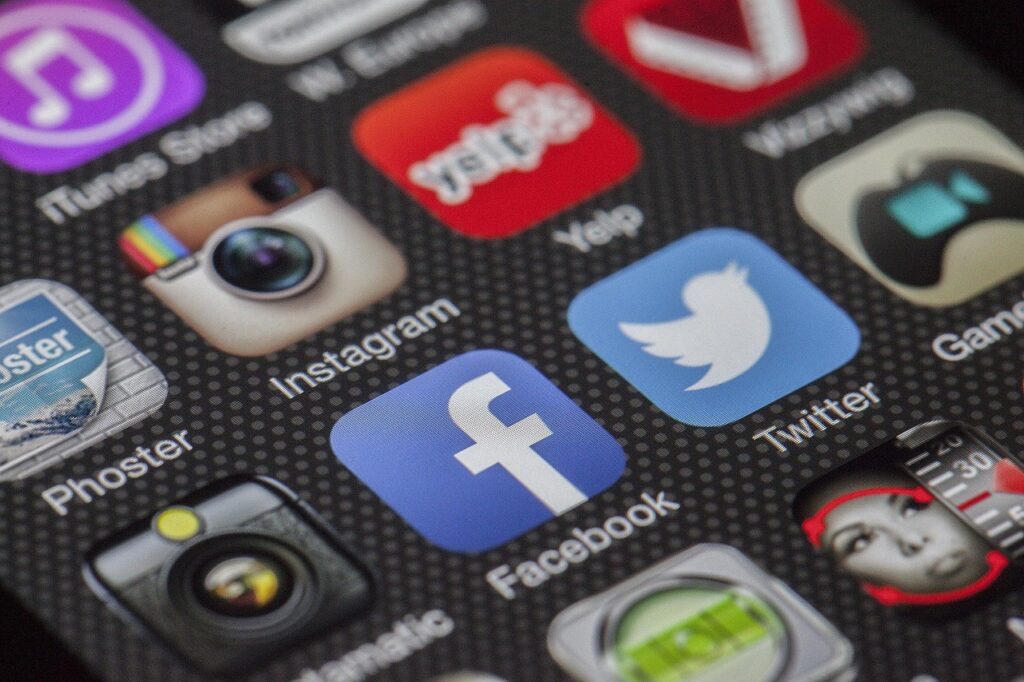Maximizing Attendance with Automated Event Reminders
In the fast-paced world of digital marketing, event attendance can make or break your business objectives. A staggering 97% of studies demonstrate that automated event reminders effectively improve attendance rates, with patients receiving appointment reminders showing a weighted mean relative reduction in non-attendance of 34% from baseline rates [1]. This powerful statistic underscores the critical importance of implementing automated event reminders in your marketing strategy to maximize attendance and drive meaningful engagement with your target audience.
What Are Automated Event Reminders and Their Core Components?
Automated event reminders are digital notifications designed to alert users about important tasks, upcoming events, or deadlines without requiring manual intervention. These sophisticated systems can be programmed into various tools, applications, and platforms, allowing organizers to send prompts via email, text messages, or app notifications seamlessly. The primary purpose of automated event reminders is to enhance time management by ensuring that individuals do not forget crucial responsibilities while maintaining consistent engagement throughout the customer journey.
The core components of effective automated event reminders include customizable scheduling features that allow users to set reminders at specific intervals, multi-channel delivery options encompassing email and SMS capabilities, and intelligent categorization systems that prioritize reminders by importance. Modern automated reminder systems can learn user behaviors and preferences, providing smarter notification options that adapt over time to maximize effectiveness. These systems integrate seamlessly with project management tools, calendar applications, and customer relationship management platforms to create a comprehensive reminder ecosystem.
Why Automated Event Reminders Matter in Digital Marketing
Automated event reminders have become indispensable in digital marketing due to their proven ability to drive engagement and reduce no-show rates across industries. Nearly 90% of healthcare leaders report that their organizations use automated appointment reminders, with these systems resulting in higher revenue, lower no-show rates, better patient compliance, and improved appointment utilization. The transition from conventional marketing techniques to automated solutions transforms event management by reducing administrative burdens and ensuring consistency and accuracy.
Marketing automation can lead to a 14.5% increase in sales productivity, enabling businesses to focus more time on innovation and content quality refinement [5]. Studies indicate that automated reminder systems demonstrate a mean cost of €0.14 per contacted patient, compared to €0.90 for manual telephone reminders, showcasing significant cost-effectiveness [1]. Additionally, 88% of healthcare leaders’ organizations implement automated appointment reminders, while only 11% do not use them, highlighting the widespread adoption and recognition of their value [1]. The effectiveness of automated reminders extends beyond healthcare, with event marketing platforms reporting that automated email campaigns, ticketing systems, and smart invitation workflows significantly boost efficiency and reduce human error.
The Psychology Behind Automated Event Reminders and Consumer Behavior
The effectiveness of automated event reminders stems from powerful psychological principles that influence human behavior and decision-making processes. Fear of Missing Out (FOMO) represents one of the most compelling psychological drivers, as it taps into humans’ fundamental yearning for inclusion and connection. FOMO is fueled by social comparison, where individuals compare their own experiences to those of others, creating anxiety about missing rewarding experiences that others are enjoying. This psychological phenomenon becomes particularly potent in event marketing, where potential attendees fear being excluded from valuable networking opportunities, industry insights, or exclusive content.
The reciprocity principle, elaborated by social psychologist Robert Cialdini, demonstrates that when individuals receive something of value, they experience an internal obligation to reciprocate. In the context of automated event reminders, this principle manifests when organizers provide valuable information, exclusive content, or early access opportunities, creating a sense of indebtedness that motivates attendance. Research shows that even small gestures can significantly influence consumer behavior and decision-making processes, making recipients more likely to engage in behaviors beneficial to the giver.
Social proof emerges as another critical psychological factor, where people rely on the actions and experiences of others to guide their own behavior. When automated reminders showcase attendee numbers, past event testimonials, or social media engagement metrics, they create a powerful signal that the event is worth attending. The larger the demonstrated turnout or engagement, the stronger the social proof effect, which can create a fear of missing out and increase desire to participate.
How Automated Event Reminders Work Through Strategic Implementation
Automated event reminders operate through a systematic workflow that begins with user input, where organizers specify task details, due dates, times, and delivery preferences. The system then schedules reminders for specific dates and times, accommodating both one-time events and recurring tasks through sophisticated programming algorithms. When the predetermined moment arrives, the system triggers alerts delivered via multiple channels including emails, desktop notifications, SMS messages, or third-party applications connected through APIs.
The process continues with action and feedback mechanisms, where recipients can mark tasks as completed, reschedule events, or provide responses that inform future reminder strategies. For example, a webinar registration system might automatically send an initial confirmation email immediately after signup, followed by a reminder sequence at 7 days, 3 days, 1 day, and 2 hours before the event . Each reminder contains progressively more detailed information, from initial event highlights to final logistical details and access links.
Advanced systems incorporate behavioral learning capabilities, analyzing recipient response patterns to optimize timing, frequency, and content delivery. These platforms can segment audiences based on engagement levels, previous attendance history, and interaction preferences to deliver highly personalized reminder experiences. The integration with customer relationship management systems enables seamless data flow between platforms, eliminating manual data entry and consolidation while providing comprehensive analytics on reminder effectiveness.
Real-world implementation involves creating trigger-based workflows where specific actions initiate reminder sequences. For instance, when someone registers for a virtual conference, the system automatically begins a predetermined email sequence that includes welcome messages, preparatory content, technical instructions, and final access reminders. This automated approach ensures consistent communication while freeing marketing teams to focus on content creation and strategy development.
Why Automated Event Reminders Prove Highly Effective
The effectiveness of automated event reminders stems from their ability to address fundamental human memory limitations while leveraging psychological triggers that motivate action. Research demonstrates that reminders provide greater benefits under high cognitive load conditions, with studies showing that the benefit of reminders was greater under high load than low load conditions across multiple experiments. This finding indicates that automated reminders become increasingly valuable as individuals manage multiple commitments and competing priorities.
Technical superiority emerges through precision targeting capabilities that allow marketers to categorize attendees based on various factors including previous event participation, engagement levels, job titles, geographic locations, and specific content interactions [5]. This segmentation enables customized messaging approaches where first-time attendees receive beginner-friendly content while experienced participants access advanced topics or exclusive sessions [5]. The result is enhanced user experience and increased conversion rates through personalized engagement strategies [5].
Consistency represents another critical effectiveness factor, as automated systems maintain regular dialogue with attendees from initial registration through post-event follow-up. This systematic approach keeps events top-of-mind without overwhelming recipients, creating a complete end-to-end experience that extends beyond the event itself. Case studies demonstrate significant improvements, with Cleveland Clinic achieving a 20% reduction in no-show rates through automated text messaging, while Mayo Clinic observed decreases from 15% to 9% in missed appointments [16].
Cost-effectiveness provides compelling evidence for automated reminder adoption, with studies showing automated systems cost €0.14 per contacted individual compared to €0.90 for manual approaches [1]. This dramatic cost reduction enables organizations to scale their reminder programs without proportional increases in staffing or operational expenses . Additionally, automated systems eliminate human error risks while ensuring consistent message delivery across large audiences.
How to Implement Automated Event Reminders Successfully

Successful implementation of automated event reminders requires a systematic approach beginning with comprehensive planning and tool selection. Start by identifying key processes and mapping out current workflows to pinpoint areas where automated reminders can provide maximum impact. Focus on high-impact activities with strict deadlines or significant consequences for non-attendance, documenting each process step including responsible parties and relevant timelines.
Select appropriate technology platforms that integrate seamlessly with existing systems such as calendar applications, email marketing tools, and customer relationship management software. Popular options include project management platforms like Asana and Monday.com, scheduling tools such as Calendly and Acuity Scheduling, and comprehensive event marketing solutions like Eventify, Cvent, and Bizzabo [6][18]. Evaluate platforms based on their automation capabilities, API integration options, and ability to support multiple communication channels including email, SMS, and in-app notifications [18].
Configure reminder sequences using strategic timing patterns that balance effectiveness with user experience. Implement a multi-touch approach with initial confirmation emails sent immediately after registration, followed by reminders at 1 week, 1-2 days, and 2-3 hours before the event. Each message should serve a specific purpose, from maintaining engagement to providing final logistical details. Customize content for different audience segments, ensuring that messaging resonates with recipient preferences and behaviors.
Establish clear triggers and automation rules that define when reminders should be sent based on specific actions or time intervals . Create workflows that activate when events are booked, before events start, when events begin, after events end, or when cancellations occur. Design personalized message templates using variables such as event names, locations, and attendee-specific information to enhance relevance and engagement.
Test and optimize reminder systems through careful monitoring of performance metrics including open rates, click-through rates, attendance rates, and user feedback [20]. Implement A/B testing for different message formats, timing intervals, and communication channels to identify optimal configurations [20]. Regularly review and adjust reminder frequencies, content, and delivery methods based on recipient responses and engagement patterns [20].
Monitor effectiveness through comprehensive analytics that track reminder delivery, recipient engagement, and ultimate attendance outcomes. Establish key performance indicators such as attendance rates (targeting 70-90% for corporate events), registration conversion rates (aiming for 15-25%), and on-time arrival rates (seeking 85-95% of attendees). Use these metrics to continuously refine reminder strategies and demonstrate return on investment to stakeholders.
Maintain compliance with privacy regulations and communication preferences by implementing opt-out mechanisms and respecting recipient boundaries. Ensure that reminder systems include clear unsubscribe options and honor user preferences for communication frequency and channel selection. Regular system maintenance and updates guarantee continued effectiveness and alignment with evolving technology standards.
Advanced Strategies for Maximizing Reminder Effectiveness
Advanced automated reminder strategies incorporate sophisticated personalization techniques that go beyond basic demographic segmentation to include behavioral triggers and predictive analytics. Implement dynamic content that adjusts based on recipient engagement history, previous event attendance patterns, and demonstrated preferences for specific topics or formats. Utilize AI-powered email campaigns that analyze recipient behavior to optimize send times, subject lines, and content recommendations for maximum engagement.
Deploy multi-channel reminder sequences that combine email, SMS, and push notifications strategically rather than redundantly. Research indicates that SMS reminders can be particularly effective for time-sensitive notifications, with text messages providing immediate visibility and high open rates compared to email communications. Create channel-specific messaging that leverages each medium’s strengths while maintaining consistent branding and core information.
Incorporate gamification elements and interactive features that transform passive reminder receipt into active engagement opportunities. Design reminders that include polls, quizzes, or exclusive content previews that generate excitement and anticipation for the upcoming event. Use social proof elements such as attendee counters, testimonials, or social media feeds to reinforce the value proposition and create urgency.
Implement post-event reminder sequences that extend engagement beyond attendance to include follow-up surveys, resource sharing, and invitations to future events. This comprehensive approach maximizes the lifetime value of each attendee relationship while gathering valuable feedback for continuous improvement. Create automated nurture sequences that convert one-time attendees into regular participants through strategic content delivery and relationship building.
Conclusion
Automated event reminders represent a fundamental shift in how modern marketers approach audience engagement and attendance optimization. The evidence overwhelmingly demonstrates that these systems deliver measurable results, with 97% of studies showing improved attendance rates and cost reductions of up to 84% compared to manual approaches [1]. The psychological foundations of FOMO, reciprocity, and social proof create powerful motivational forces that automated reminders can strategically leverage to drive participation and engagement.
The technical capabilities of modern automated reminder systems, combined with their integration potential across marketing technology stacks, provide unprecedented opportunities for personalization and optimization [6]. Organizations that implement comprehensive reminder strategies report not only improved attendance rates but also enhanced customer relationships, increased operational efficiency, and superior return on investment [4][16]. The key to success lies in systematic implementation, continuous optimization, and strategic alignment with broader marketing objectives [18].
As digital marketing continues to evolve, automated event reminders will become increasingly sophisticated, incorporating artificial intelligence, predictive analytics, and advanced personalization capabilities [6]. The organizations that master these systems today will be best positioned to capitalize on future innovations while building sustainable competitive advantages through superior customer engagement and operational excellence [13].
The question is not whether to implement automated event reminders, but rather how quickly and comprehensively you can deploy these powerful tools to transform your event marketing effectiveness and drive unprecedented attendance success.
Frequently asked questions
1. How often should I send automated event reminders to maximize attendance?
The optimal frequency for automated event reminders follows a strategic sequence of at least three touchpoints to maximize effectiveness. Send an initial confirmation email immediately after registration, followed by reminders at 1 week, 1-2 days, and 2-3 hours before the event. For webinars, the recommended timing is 1 week, 1 day, and 1 hour before the online event starts, while in-person events benefit from reminders at 2 weeks, 3 days, and the morning of the event. Research shows that 60% of event registrants simply forget to attend, making this multi-touch approach essential for reducing no-shows [2]. Professional marketers typically send between 3-6 reminder emails, with 22% of professionals sending six or more email reminders as the event approaches [3].
2. What’s the difference between SMS and email reminders for events, and which is more effective?
SMS reminders significantly outperform email reminders across key engagement metrics, making them highly effective for time-sensitive event communications [4]. SMS messages achieve a remarkable 98% open rate compared to email’s 20-30% open rate, with most text messages being read within three minutes of delivery [4][5]. The response rate advantage is equally impressive, with SMS generating a 209% higher response rate than phone, email, or Facebook Messenger communications [6]. However, SMS messages are limited to 160 characters, making them suitable for concise reminders, while emails provide unlimited space for detailed event information, instructions, and attachments [7]. For optimal results, many organizations implement a multi-channel approach combining both SMS for immediate notifications and email for comprehensive event details [8].
3. How much does implementing an automated event reminder system typically cost?
The cost of automated event reminder systems varies significantly based on features and complexity, ranging from basic to enterprise-level solutions [9]. Basic SMS and email reminder systems typically cost $5-25 per month, while feature-packed Software-as-a-Service (SaaS) reminder platforms range from $20-100+ per month [9]. Fully customized reminder systems can cost anywhere from tens to thousands of dollars per month, depending on integration requirements and scalability needs. The investment proves cost-effective, as automated reminder systems cost only €0.14 per contacted individual compared to €0.90 for manual telephone reminders, representing an 84% cost reduction [10]. Companies utilizing event marketing automation report a 12.2% reduction in marketing overheads and a 14.5% improvement in sales productivity [10].
4. Can automated event reminders be personalized, and does personalization improve attendance?
Automated event reminders can be highly personalized using attendee data, preferences, and behavioral triggers to create more engaging and effective communications. Modern reminder systems allow customization based on registration data, previous event attendance patterns, job titles, geographic locations, and specific content interactions. Personalized event experiences lead to significantly higher engagement levels and attendee satisfaction, as demonstrated by companies like Adobe Summit, which implemented personalized schedules based on attendee interests. Research shows that personalized reminders help attendees feel more valued and increase engagement rates compared to generic communications. Advanced systems can segment audiences and deliver tailored messaging, with different content for first-time attendees versus experienced participants, ensuring relevance and maximizing conversion potential.
5. Are there legal compliance requirements for sending automated event reminders under GDPR?
Under GDPR regulations, automated event reminders typically fall under legitimate business interests and don’t require explicit marketing consent, unlike promotional emails. Event reminder notifications are considered part of delivering and managing the services you provide, giving organizations a “very good reason for processing” personal data. Healthcare providers and service-based businesses can send reminder notifications under GDPR Article 9(2)h as their legal basis, since reminder communications have minimal privacy impact and are common practice [13]. However, organizations must document their lawful basis for processing personal data and ensure reminders include clear opt-out mechanisms. All automated reminder systems must respect recipient communication preferences, provide unsubscribe options, and maintain compliance with data protection regulations while honoring user boundaries regarding communication frequency and channel selection.
- “35+ Patient Appointment Reminder Statistics Showcasing Their Impact,” Dialog Health, accessed June 22, 2025.
https://www.dialoghealth.com/post/patient-appointment-reminder-statistics. - “What is Automated Reminders,” liftOS, November 12, 2024.
https://www.liftos.io/glossary/automated-reminders. - “Basics Of Reminder System: What Is It & Why Do You Need One?” WP Web Infotech, December 2, 2024.
https://wpwebinfotech.com/blog/what-is-reminder-system/. - “Automated appointment reminders lead to fewer no-shows,” MGMA, February 28, 2019.
https://www.mgma.com/mgma-stats/automated-appointment-reminders-lead-to-fewer-no-shows. - “How to Use Marketing Automation in Your Events,” AEvent, March 8, 2024.
https://aevent.com/marketing-automation-events/. - “10 Best Event Marketing Platforms of 2025,” Eventify, May 16, 2025.
https://eventify.io/blog/event-marketing-tools. - “FOMO – Exploring the Psychology Behind the Fear of Missing Out,” Ulliance, 2018.
https://blog.ulliance.com/fomo-exploring-psychology-behind-fear-missing-out. - “The Psychology of FOMO: Leveraging Fear of Missing Out in Push Notifications,” NGrow, February 28, 2025.
https://www.ngrow.ai/blog/the-psychology-of-fomo-leveraging-fear-of-missing-out-in-push-notifications-for-increased-engagement. - “The Reciprocity Principle and How to Use It in Marketing,” CJPI, May 29, 2025.
https://www.cjpi.com/insights/the-reciprocity-principle-and-how-to-use-it-in-marketing/. - “Social proof in event marketing,” The Event Network, accessed June 22, 2025.
https://theeventnetwork.com.au/social-proof-in-event-marketing/. - “Timing Your Event Reminder Emails for Maximum Attendance,” Mailchimp, March 3, 2025.
https://mailchimp.com/resources/event-reminder-email/. - (Not in your list)
- “Ultimate Guide to Event ROI + Compelling Event ROI Report,” Eventify, February 24, 2025.
https://www.eventify.io/blog/event-roi. - Dan Thorne, “How to Deliver Event Reminders and Follow-Ups Automatically,” YouTube, May 4, 2025.
https://www.youtube.com/watch?v=RGfUJkvrfQA. - Phil Peper, Durna Alakbarova, and Hunter Ball, “Prospective Memory and Reminder Type,” University of Texas at Arlington, accessed June 22, 2025.
https://bpb-us-e1.wpmucdn.com/websites.uta.edu/dist/1/5089/files/2022/09/Pepper-et-al.-2022-PM-Reminders.pdf. - “How Automated Reminders Reducing No-Shows and Improve Hospital Booking,” Kata.ai, December 10, 2024.
https://kata.ai/blog/how-automated-reminders-reducing-no-shows-and-improve-hospital-booking-appointment/. - “Automated Reminder System,” BuildOps, January 28, 2024.
https://buildops.com/resources/automated-reminder-system/. - “Optimizing Workflow With Automated Reminder Systems,” WP Web Infotech, December 17, 2024.
https://wpwebinfotech.com/blog/optimize-workflow-with-automated-reminder-system/. - “How to create reminders using workflows,” Zeeg Help Center, May 14, 2025.
https://help.zeeg.me/en/workflows/how-to-create-reminders-using-workflows. - “Best Practices for Setting Up Automated Reminders for Bookings,” WP Booking System, October 15, 2024.
https://www.wpbookingsystem.com/blog/best-practices-for-setting-up-automated-reminders-for-bookings/. - “What are the best metrics for Event Attendance?” Tability, October 30, 2024.
https://www.tability.io/templates/metrics/t/cxjBvfSj_u0s. - “Automated reminder and message system,” Reservio, April 14, 2022.
https://www.reservio.com/features/reminders. - “75 customizable event reminder text message samples,” Textline, December 12, 2024.
https://www.textline.com/blog/event-reminder-sms. - “From Clicks to Seats – The Blueprint for Increasing Event Attendance,” Samaaro, March 3, 2025.
https://samaaro.com/event-roi/from-clicks-to-seats-the-blueprint-for-increasing-event-attendance/. - “The Psychology Behind FOMO (Fear of Missing Out),” Resilience Lab, February 17, 2025.
https://www.resiliencelab.us/thought-lab/psychology-behind-fomo.
Read more
Boost Revenue Now: Essential Advertising KPIs Every CEO Uses
Advertising Automation KPIs Every Marketer Should Track Picture this: companies are crushing it with $5.44 back…
10 Game-Changing Facebook Ads Workflows for 2025 Growth
Picture this: 76% of businesses using Facebook ads workflows slash their campaign management time by 30%….
10 Deadly Retargeting Mistakes Business Owners Make
Did you know that retargeting campaigns can boost conversion rates by up to 150%? Yet many…
10 Invoice Automation Workflows That Skyrocket Cash Flow Now
Are you still stuck with paper invoices and typing in data by hand? Here’s a…
Revolutionary: 10 Social Media Automation Strategies Crushing Competition
Imagine this: you’re staring at your calendar, heart racing as you realize your biggest event…
10 Hidden Price drop Automation Secrets Competitors Don’t Know
Did you know that 77% of businesses using marketing automation see increased conversion rates, while…







